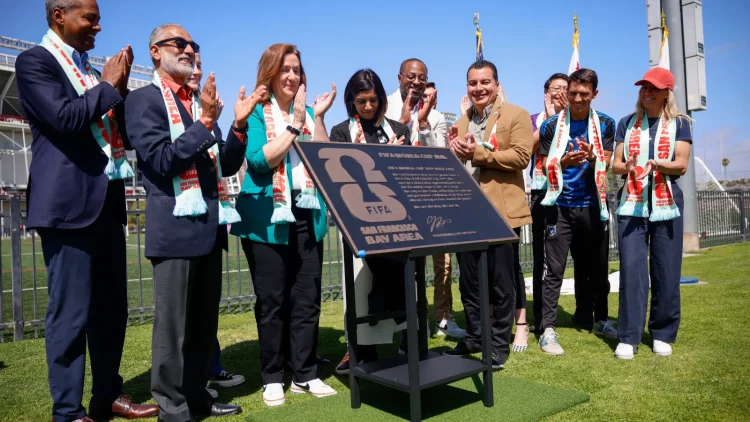The anticipation for the 2026 FIFA World Cup is unlike any previous tournament, and the ticket lottery system put in place has generated a frenzy that is reshaping how fans engage with global sporting events. The excitement is palpable, yet behind the scenes, several factors are driving unprecedented demand, pushing secondary market prices through the roof, sparking controversies over stadium capacities, and intertwining ticket ownership with innovative digital collectibles. Understanding these dynamics sheds light on why the 2026 World Cup ticket lottery is creating such a historic phenomenon.
Secondary Market Price Surges
One of the most striking features of the 2026 World Cup ticket lottery aftermath has been the explosive growth in secondary market prices. Traditionally, FIFA’s ticketing system aimed to democratize access, offering fans from across the globe the chance to witness the spectacle at face value. However, as soon as the official lottery results were announced, the resale market ignited with soaring prices that dwarfed previous tournaments.
Several factors contribute to this surge. The 2026 edition is unique in that it will be hosted jointly by three North American countries—Canada, Mexico, and the United States—dramatically increasing geographical accessibility but also inflating demand. Fans from all three nations, as well as international travelers, see this as a once-in-a-lifetime opportunity to attend matches across multiple cities and cultures, intensifying competition for tickets.
Furthermore, the lottery’s randomized distribution system means many fans missed out despite high hopes. Scarcity of official tickets leads eager buyers to turn to resellers who capitalize on the pent-up demand. Data from ticket resale platforms reveal that prices for opening ceremony seats and knockout stage matches have surged by as much as 400%, a figure unseen in prior World Cups.
This inflation is partly fueled by speculative buyers who acquire tickets with the intention of selling at a profit, anticipating that fans will pay premiums to guarantee attendance. Additionally, corporate buyers and hospitality groups purchase bulk seats to accommodate VIPs and clients, further tightening supply.
The rise in secondary market prices raises concerns about accessibility and fairness. FIFA has taken steps to combat scalping, but the sheer scale and fragmented nature of reselling platforms make enforcement difficult. Fans complain of inflated costs that price out average supporters, turning attendance into an elite privilege rather than a universal celebration.
Stadium Capacity Controversies
Another source of unprecedented demand is tied to ongoing controversies surrounding stadium capacities in host cities. The 2026 World Cup is set to be the largest ever, expanding from 32 to 48 teams and incorporating 16 host cities. This expansion requires balancing traditional football stadium sizes with larger multipurpose venues adapted for the tournament.

Some cities boast iconic stadiums with limited seating capacities, sparking debate over whether they can meet demand while maintaining atmosphere and safety. For example, stadiums in Canada and Mexico feature smaller capacities compared to those in the United States, where some venues are shared with NFL teams and hold upwards of 70,000 fans.
This disparity means that ticket allocations per city are uneven, creating hot spots of demand in smaller venues. Fans covet tickets in these intimate, historic stadiums but face steep odds due to limited supply. Meanwhile, the larger American stadiums generate demand because of their scale but also because they host the tournament’s marquee matches, including the final.
Local governments and organizing committees have faced pressure to either expand stadiums temporarily or add supplementary venues, but logistical constraints and budget limitations pose challenges. This bottleneck in physical capacity amplifies demand in the lottery system, as fans vie for the limited seats that each city can offer.
Moreover, safety protocols post-pandemic have introduced new restrictions and adjustments to venue capacities, adding complexity. Organizers must balance fan enthusiasm with public health and crowd management, further limiting available seats.
Digital Collectible Tie-Ins
Adding a new dimension to ticket demand is the integration of digital collectible tie-ins with ticket purchases—a novel approach that blends traditional event attendance with emerging blockchain and NFT technologies. The 2026 World Cup ticket lottery is not just about physical seats but also about owning unique digital assets linked to tickets.
FIFA partnered with several tech companies to launch officially licensed digital collectibles that correspond to ticket purchases. These digital tokens serve as proof of authenticity, exclusive memorabilia, and, in some cases, provide holders with special experiences or content. Fans can own a digital artwork of their match ticket, complete with augmented reality features and highlights tied to their specific seat location.
This fusion has created new layers of demand. Collectors and digital enthusiasts enter the lottery system not just to attend matches but to secure rare digital assets that could appreciate in value or serve as status symbols within fan communities.
The digital collectible phenomenon is further amplified by social media campaigns, celebrity endorsements, and partnerships with gaming platforms that allow fans to showcase their assets in virtual environments. This cross-pollination between sports fandom and digital culture is expanding the World Cup’s reach to younger, tech-savvy audiences who might otherwise be less engaged.
Critically, the blending of ticket ownership with digital collectibles adds complexity to resale markets. Secondary sales now often include both the physical ticket and the associated digital asset, complicating valuation and transfer processes. This innovation is reshaping what it means to “own” a ticket, turning it into a hybrid experience that is part event access, part investment, and part digital identity.
Conclusion
The 2026 World Cup ticket lottery is generating unprecedented demand due to a perfect storm of factors. Skyrocketing secondary market prices reflect a global frenzy fueled by geographic accessibility and speculative buying. Stadium capacity controversies spotlight the challenges of accommodating a record-breaking tournament across diverse venues with varying sizes and safety protocols. Meanwhile, the innovative integration of digital collectibles redefines ticket ownership, attracting new demographics and transforming fan engagement.
This unique confluence of economic, logistical, and technological factors is reshaping the landscape of World Cup attendance. As the tournament approaches, stakeholders face the challenge of balancing fairness, accessibility, and innovation. The lessons learned in 2026 will likely influence how mega sporting events are ticketed and experienced in the years to come, setting new standards for global fan engagement in the digital age.


































Discussion about this post